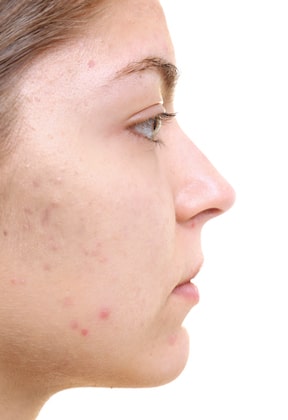
When it comes to the formation of acne on the skin, there are some types of acne that can result in a raised scar that is also known as a keloid or hypertrophic scar. In addition, some scars can be indented, and these scars are known as atrophic scars. Patients that want to treat the appearance of these scars can reduce their visibility or size using both surgical and nonsurgical scars.
How does plastic surgery treat acne scars? Let’s start the discussion with an insightful video from Cosmetic Town News:
Acne scars that are indented in appearance can be surgically lifted closer to the surface of the skin, so they are less noticeable in appearance. If the scar is considered to be “deeply indented” in appearance and depth, a punch technique might need to be performed to elevate, remove, or replace the scar tissue through the use of a skin graft. Some of the injection choices include corticosteroids or interferon.
Cryosurgery freezes the scar tissue so the scar will die and eventually fall off. Patients need to know in advance that cryotherapy and corticosteroid injections provide ideal treatments when combined while cryosurgery on its own can cause the formation of permanent light spots on the skin. Patients need to ask their doctor if their skin color is ideal for the treatment.
A laser treatment is also an option for reducing the look of raised scars. The doctor can use a pulsed dye laser (PDL) to flatten the scar. Patients with a lighter shade to their skin can also undergo intense pulsed light (IPL) laser treatment.

If the acne scar is raised in appearance, the doctor can perform multiple injections of medication directly into the scar to soften and flatten a scar that is raised and thick. If the injections do not resolve the issues with the raised scar, acne scar surgery might be necessary to reduce its appearance. The surgery can be followed up with additional injections into the targeted area. If the patient does not see satisfactory results after a fourth round of injections, the person might need to explore surgical options.
Subcision is when a needle is inserted below the scar and moved around to produce a micro-wound. The creation of the micro-wound will stimulate the production of collagen in the skin which will help to improve the appearance of a scar that is depressed in the skin.
Treatment options such as gels, scar creams, and silicone dressings can be performed at the home of a patient to shrink, fade, or flatten raised scars. They can also lessen the pain or itching felt by the person and even make the skin more flexible. These treatments need to be performed on a continuous basis but none of them are likely to completely eliminate a raised scar.
Dermal fillers are injected under the skin to elevate scars that are indented. Some of the most popular fillers used for this treatment option include hyaluronic acid fillers and poly-L-lactic acid fillers. These fillers are ideal for improving the appearance of depressed scars, but they are not a good option for scars that are shaped like an icepick (which means they are deep in the skin and have a look like an icepick has punctured the skin). Patients can discuss their filler options with their doctor, but the Food and Drug Administration (FDA) has approved the use of Bellafill for the treatment of acne scars in patients over twenty-one years of age.
Laser resurfacing is when the doctor runs wavelengths of light across the skin so the skin will produce additional collagen. This treatment works well on depressed acnes scars by reducing their edges and making them less visible.
Chemical peels are a solution (of varying depths) that are placed on the skin in order to cause peeling of the outer skin layer. The peeling of this layer of the skin stimulates the growth of new skin and it is a good option for depressed scars.
Microneedling also works to produce more collagen, and this is accomplished by passing a device across the skin that contains tiny needles. The needles are able to create a micro-injury that triggers the healing response of the body. It often takes three to six sessions to gain the results desired by the patient. Microneedling is a good option for treating depressed scars.
Skin tightening makes use of radiofrequency to tighten the skin, so the raised scars are much less visible to others. The radiofrequency energy is emitted onto the skin through an electromagnetic device that produces heat. In turn, the heat stimulates the production of collagen as well as the formation of new skin cells on the body of the patient.
After reviewing all of the treatment options listed in this article, the question remains, “Is there one best treatment for acne scars?”
Unfortunately, the answer to that question is, No.”
As shown above, different treatments are available for different types of scars. In order to determine the best treatment option for their specific needs, a patient should have a series of questions prepared to ask their doctor during a consultation appointment. Some of these questions include:
Once the patient has the answer to these questions, they can make an educated decision about the treatment of their acne scars.
- MA